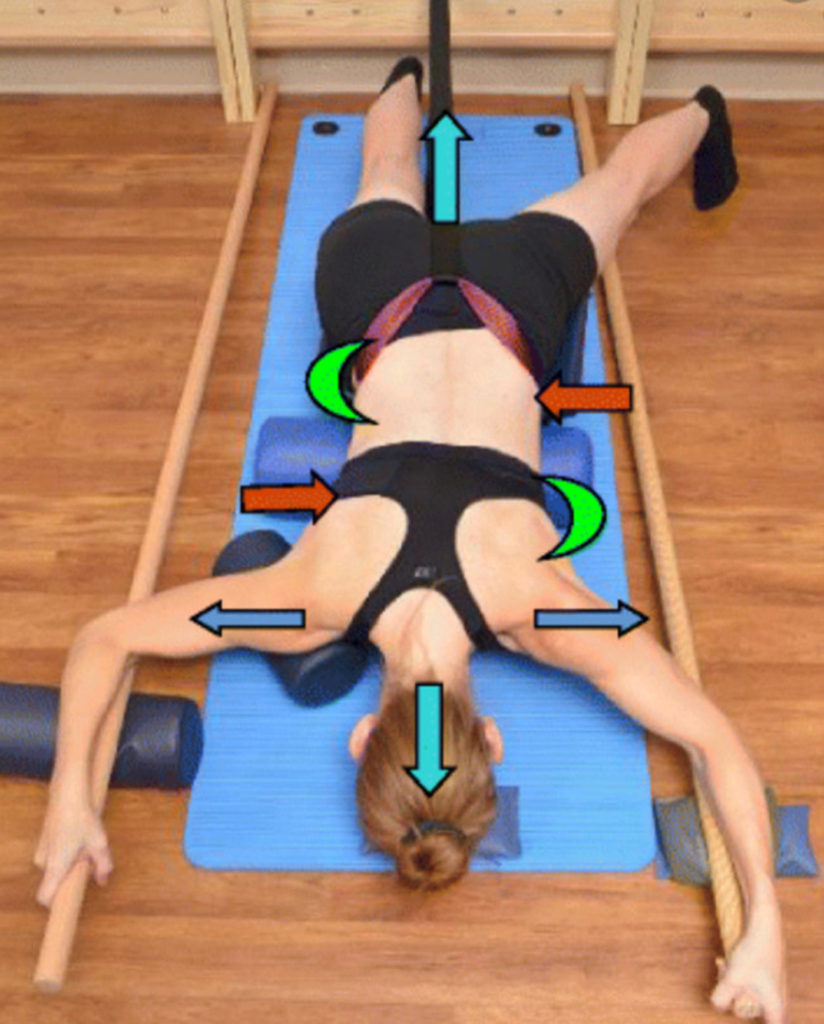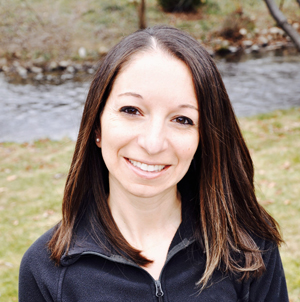By Rita Miller, PT, MPT, BSPTS C2 Certified in Scoliosis Specific Exercises
Everyone’s spine has natural curves. These curves round our shoulders and make our lower back curve slightly inward. When viewed from the side, the upper back has a normal round back or kyphosis, while in the lower spine there is “swayback”, or lordosis. When viewed from behind, a spine normally appears straight but some people have spines that also curve from side to side and rotate. This condition of side-to-side spinal curvature is called scoliosis.
Unlike poor posture, these curves can’t be corrected simply by learning to stand up straight. On an x-ray, the spine of a person with scoliosis looks more like an “S” or a “C” than a straight line. A slight curvature may be normal. Scoliosis is present when the spine has one or more abnormal curves of greater than 10°, as measured on the x-ray.
In childhood, idiopathic scoliosis occurs in both girls and boys. However, as children enter adolescence, girls are five to eight times more likely to have their curves increase in size and require treatment.
WHAT CAUSES AIS?
Adolescent Idiopathic Scoliosis (AIS) is a genetic condition, meaning it is inherited and a family may have more than one member with the diagnosis. The exact reason why the spine curves remains unknown (idiopathic). A difference in the rate of growth between the front and back of the spine is the leading theory.
SIGNS AND SYMPTOMS
Adolescent Idiopathic Scoliosis does not usually cause pain, neurological dysfunction such as weakness or numbness in the legs, or respiratory problems (shortness of breath). Most patients are highly functional and without any symptoms.
Most patients or parents note one or more of the following changes in the patient’s appearance:
- Chest shifted to one side
- Head not centered over bottom
- One shoulder blade more noticeable than the other
- Unevenness of the waist
- Clothes hang unevenly
- One shoulder higher than the other
- One hip higher than the other
- Unevenness of the front of the chest
CURVE PROGRESSION
Although we do not know the cause of idiopathic scoliosis, we do know that curves tend to progress based on two major factors: growth remaining in the spine and the curve size. Idiopathic scoliosis curves can get larger during growth of the spine especially during the rapid adolescent growth spurt. Age, the timing of the onset of menstrual periods in girls, the status of the growth plates of the pelvis and hand are all good predictors of how much spine growth is left.
We can review these parameters to estimate the risk of curve progression in your child. Even after your child stops growing, a large curve can get worse. Generally, curves in the thoracic spine greater than 45 or 50 degrees and lumbar curves greater than 35 or 40 degrees will progress even into adulthood. When significant growth remains AND the curve is larger than these thresholds, curve progression is 100 percent.
What Kind of Non-Surgical Treatments Are Available?
Depending on age, skeletal maturity, and curve size, scoliosis has traditionally been managed non-surgically with either a “wait and see” approach if curves are under 25 degrees, or bracing if curves are over 25 and the child has yet to reach full skeletal maturity. More recently, PSSE (Physiotherapy Scoliosis Specific Exercises) have started to be recognized by the Scoliosis Research Society as an effective way to manage the effects of scoliosis during the “wait and see” period, and also during bracing. These exercises are customized for each patient to return the curved spine to a more natural position.
So what is the #1 thing NOT to do if you have a diagnosis of AIS?
Do nothing! “Wait and see” is a fine approach when it comes to certain more invasive approaches, but it is a terrible idea if you plan on a conservative treatment approach. Physical therapy and specifically, Schroth scoliosis specific exercises are proven to be a safe and effective treatment approach with little to no risk of injury. An ever increasing body of evidence demonstrates its effectiveness.
ScoliSpine (located in Boise, Idaho) is the first to be certified in a Scoliosis Specific Exercise Program in the state of Idaho based on the principles of Katherina Schroth known as the “Schroth Method.”
Katharina Schroth (1894-1985) developed the Schroth Method, based on her personal experience with scoliosis as a teen. She dedicated countless hours attempting different corrections of her curve and discovered certain positions, movements and breathing techniques which made her own torso deformity less obvious. Trained as a teacher, Ms. Schroth started sharing her techniques with patients in the 1920’s and eventually established her own clinic in Germany. Her daughter, Christa Lehnert-Schroth P.T. (www.schroth-skoliosebehandlung.de and schrothmethod.com) helped her further develop the theory underlying the Schroth Method. Over one thousand patients are treated annually at Asklepios Katharina-Schroth Klinic in Germany and there is frequently a several month long waiting list.

Courtesy of ScoliSpine
What results can be expected after completing a Schroth program?
- Improved posture
- Improved core stability and strength
- Easier breathing
- Improved overall movement pattern and function
- Improved self-management and understanding of the spine
- Better pelvis alignment *Depending on your age, bone maturity and the degree of curvature, bracing may also be a part of the treatment.
Schroth-specific breathing complements bracing as children are able to achieve a more balanced breathing pattern with bracing and exercise, and Schroth-specific exercises improve postural strength which may improve brace compliance and overall comfort. Adults with scoliosis can also benefit from the Schroth Method.

About Rita Miller, PT
Rita Miller, PT, MPT, CSCS, C2 Certified in Scoliosis Specific Exercises is the owner of ScoliSpine located in Boise, Idaho. Read more
